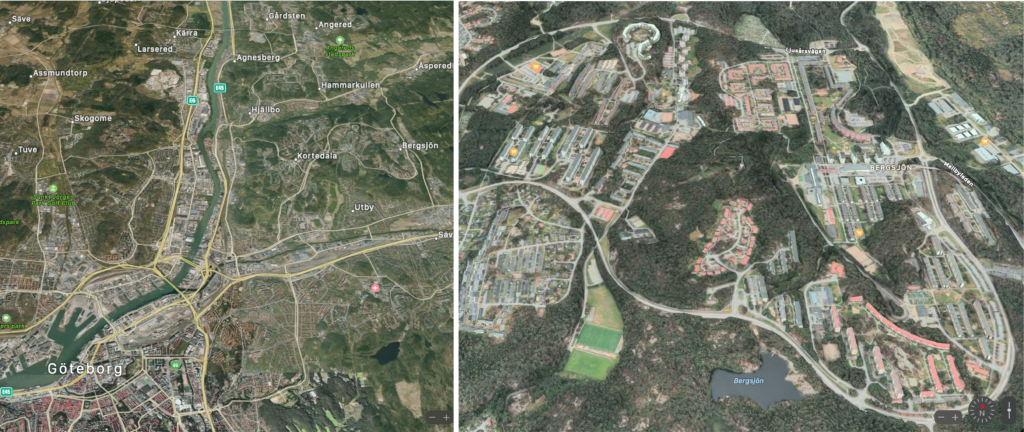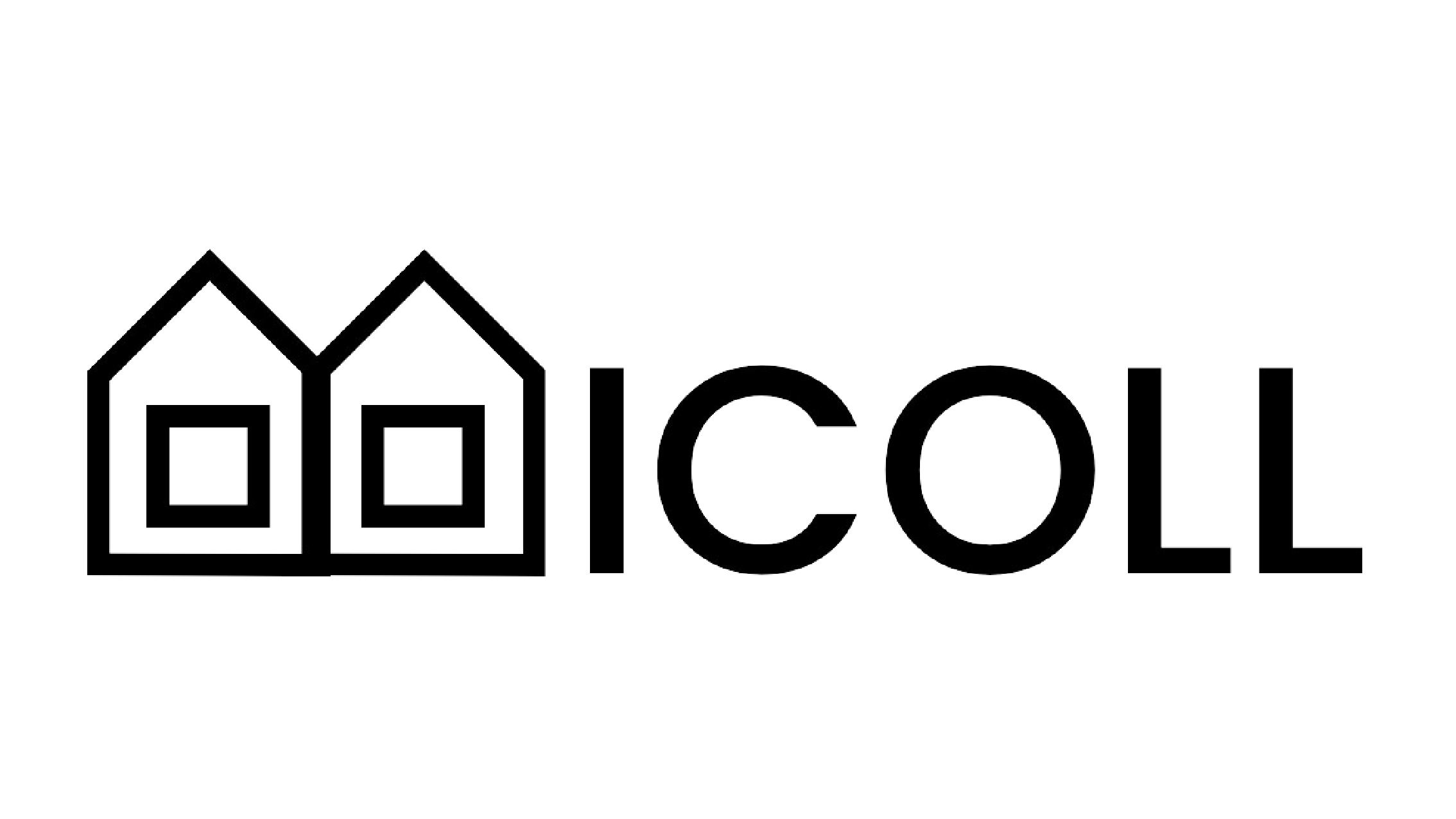2023-05-03 | MICOLL Transition Agenda
Based on intensive stakeholder interaction and transnational collaboration, the MICOLL project has developed a cross-country transition agenda for innovative collaborative housing with refugees. This agenda covers institutional frameworks for housing and urban development; capacity building for collaborative housing; and the improvement and scaling-up collaborative housing models, and highlights serious challenges and proposes action points to remedy these barriers to collaborative housing with refugees and other vulnerable groups. The transition agenda is focusing on housing provision in Austria, Sweden and the UK, but has trans-European relevance. [download Transition Agenda]
2023-03-20 | Online dissemination event with HOUSE-IN project
On March 20, Richard Lang was a guest at the “Habitologie-Salon” featuring the topic of “Housing and Migration”. This discussion forum for housing researchers from German-speaking countries was dedicated this time to the challenges faced by refugees in their search for affordable and adequate housing in European cities. Richard Lang presented key insights from the MICOLL-project, which investigated the potential of collaborative housing for the long-term integration of refugees. Afterwards, there was an opportunity for an exchange with another research project. Annegret Haase and Anika Schmidt from the Helmholtz Centre for Environmental Research (UFZ) in Leipzig presented findings from their project “HOUSE-IN: The Housing-Integration-Nexus,” which looked at the relationship between housing and social participation in European cities. Both MICOLL and HOUSE-IN were funded by the Joint Programming Initiative (JPI) Urban Europe (Urban Migration Call). The video recording of the discussion is available here.
2022-12-14 | Collaborative housing hosting refugees – Survey results from Vienna
MICOLL partnered with the Austrian housing umbrella body Initiative Collaborative Building & Living to conduct a small survey among selected collaborative housing projects in the Vienna region to explore their experiences with hosting refugees and derive recommendations for policy and practice. A brief report summarizes the key results (presently only available in German). This survey marks a first step towards more systematic analysis of the role of collaborative housing projects for the integration of refugees in Austria.
2022-11-30 | MICOLL’s second Newsletter has been published
The newsletter has been distributed to the project network. [download].
2022-11-22 | Video documentation of the OASE.inklusiv in Vienna
MICOLL presents a short video documentation of our test-bed, the OASE.inklusiv in Vienna, which is a pioneer collaborative housing project that promotes inclusiveness and community.
The video introduces important elements of this building group, including its communal areas, and explains its co-planning process with the future residents. It also features statements by key actors who were involved in the development of OASE.inklusiv. Ulrike Pilgram (neunerimmo), Markus Pendlmayr (einszueins architects) and Thorsten Eder (resident association) explain how OASE.inklusiv addresses residents with refugee background and what makes the project special compared to mainstream housing in Vienna.
The video was produced by Richard Lang (MICOLL national coordinator) together with Manuel Hanke, Max Mutz and Daniela Fiedler from our MICOLL-partner wohnbund:consult.
2022-10-19 | Study visit in Sweden
Covid-19 effectively put an end to much of the planned exchange in the MICOLL project. Instead, the interaction shifted to digital media of various kinds. But on 19-20 October 2022, we finally had the opportunity for a physical international interaction when Richard Lang from the Austrian MICOLL consortium took part in a two-day study visit in Western Sweden, organised by the Swedish MICOLL consortium. This activity brought together participant from two projects on collaborative housing for economically disadvantaged groups, the MICOLL project and an innovation project called Housing Innovation from the Bottom Up.
A mixed group of around 20 stakeholders from civil society, the public sector and academia visited Under samma tak (Under the same roof) in Gothenburg; Skärskälls ekoby (Skärskäll ecovillage) in Gerlesborg; Hogslätts vänboende (Hogslätt’s housing for friends) and Andreastorpet in Gerlesborg; Egnahem för alla (Your own home for everybody) in Ellös, Orust; and wrapping up at Egnahemsfabriken in Tjörn. At Egnahemsfabriken, Erik Berg (Egnahemsfabriken) introduced all activities taking place, Tinna Harling (Egnahemsfabriken) talked about Vinzirast in Vienna as well as Grobund and Friland in Denmark, and Richard Lang presented collaborative housing models in Vienna and their potential for refugee integration. The study visit was concluded with a stakeholder workshop on how municipalities can work with collaborative housing with migrants and others without much economic resources. [ladda ner rapport på svenska]

2022-09-26 | Presentation at the Conference on Migration Research in Austria
Richard Lang presented results from the research activities during MICOLL at the 7th biennial Conference on Migration Research in Austria that took place at the Danube University Krems this year. The main theme of the conference was “Globalisation of Borders – Borders of Globalisation: Migration between global crises and local dynamics”. Richard Lang participated in the panel on “Housing for People with Refugee Background in Vienna”. This was a great opportunity to exchange experiences and future perspectives for innovative refugee housing models with representatives from other JPI Urban Europe Migration projects, such as LoReMi and House-In.
2022-08-31 | ENHR
Richard Lang and Melissa Fernández convened a special session ‘Collaborative Housing and Migration: exploring links, gaps and possibilities’ at this year’s European Network for Housing Research (ENHR) conference in Barcelona. The conference’s main theme was “The Struggle for the “Right to Housing”: The Pressures of Globalization and Affordability in Cities Today”. The special session formed part of the wider established Working Group “Collaborative Housing” within the ENHR. For a summary of discussion points see our newsletter here.
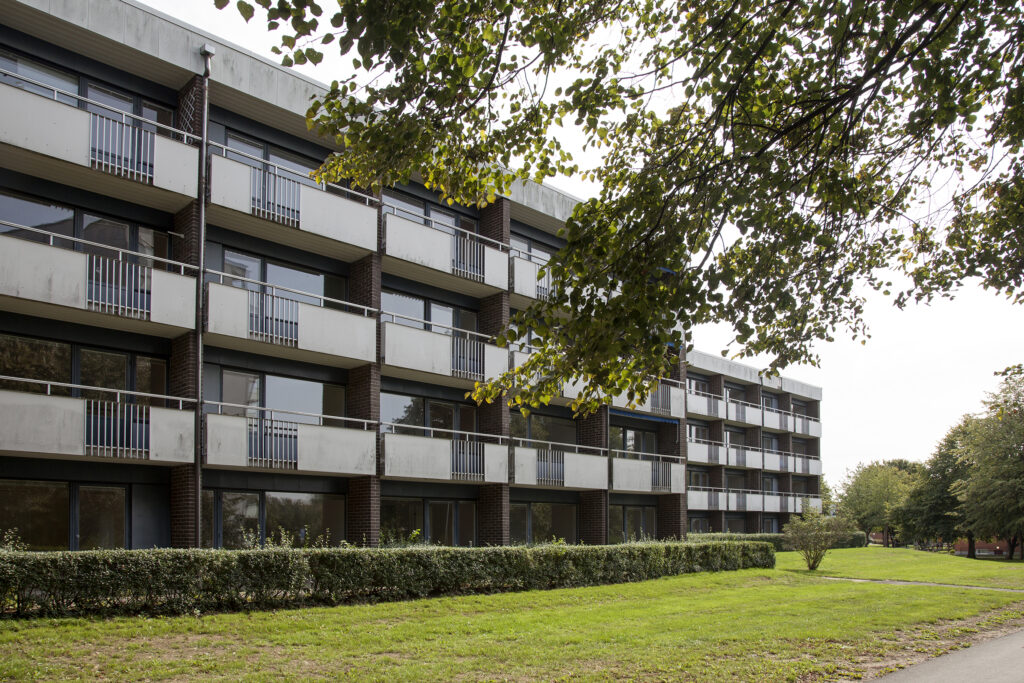
2022-07-01 | UK video
The video production for the UK element of MICOLL got underway between 28 June–1 July, when Melissa Fernández and videographers from Goldsmiths University (Anthropology Department) conducted interviews with relevant stakeholders and project partners in both London and Leeds. Individuals that took part in this first round of recording included representatives from: Camden Local Authority, the London Community Led Housing Hub, Chapeltown Cohousing and Leeds Community Homes. Transcripts of the conversations have been produced and are being integrated into written and visual outputs for the project.

Source: Melissa Fernandez Arrigoitia
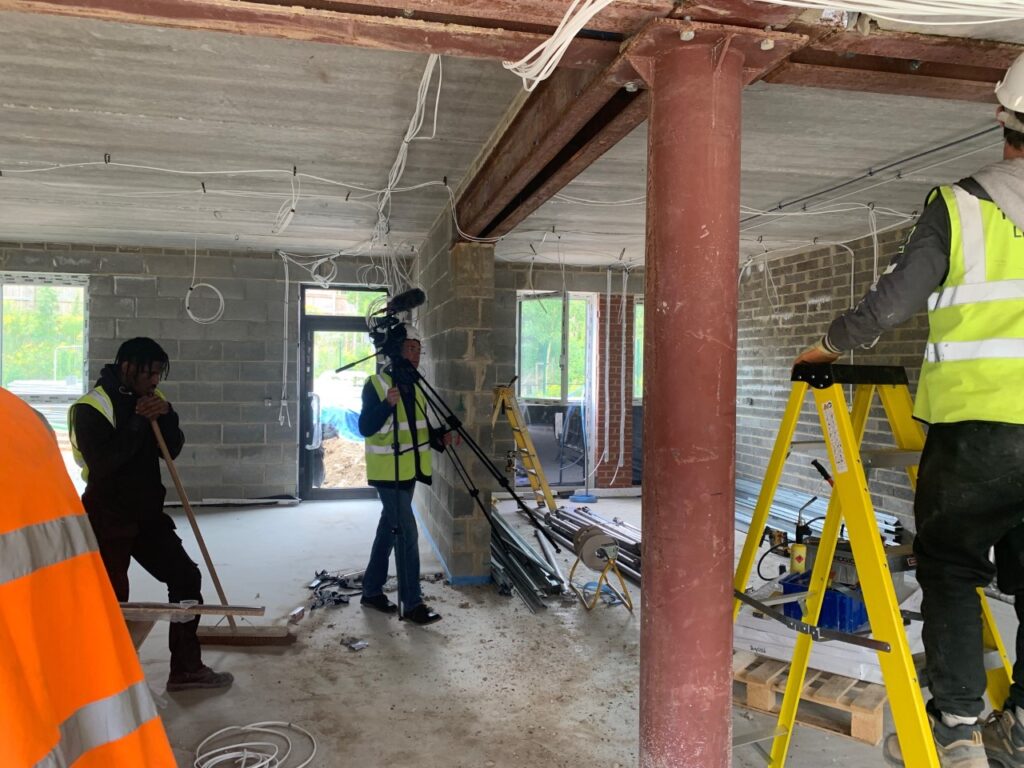
Source: Melissa Fernandez Arrigoitia
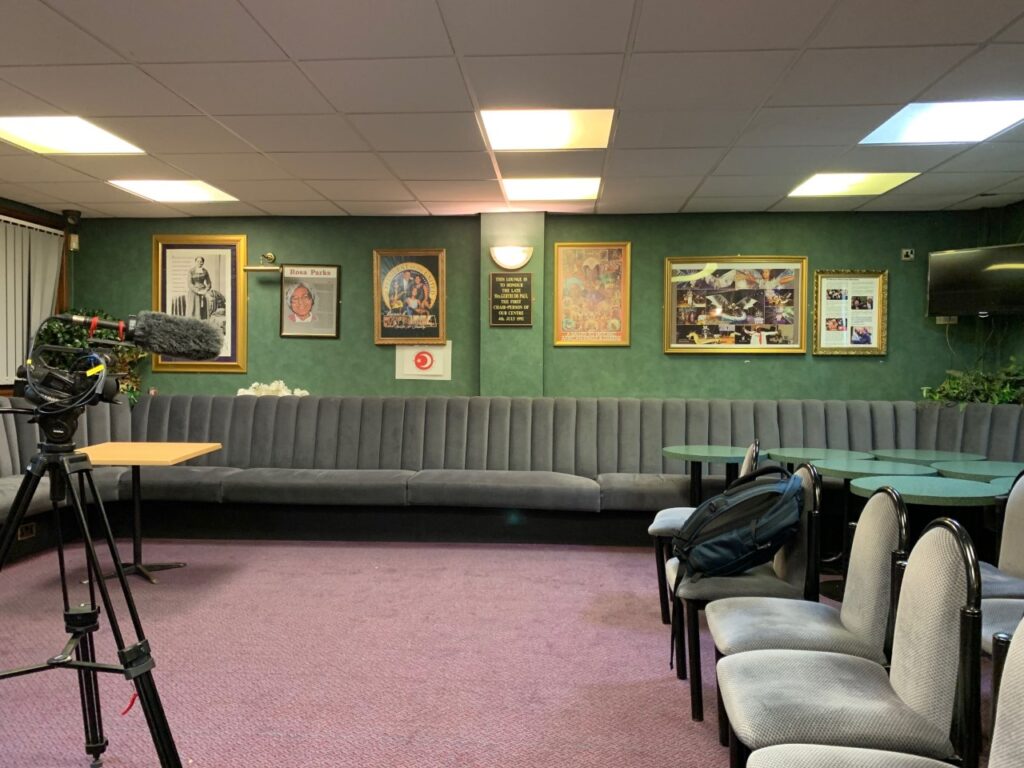
2022-06-27 | Panel discussion at the International Building Exhibition IBA_Vienna 2022
The Austrian MICOLL consortium, headed by Richard Lang, organized a panel discussion entitled Collaborative Housing Projects as an Engine for Integration? at the IBA_Vienna 2022 – international building exhibition with focus on ”New Social Housing”. Despite the incredibly hot weather, we were lucky to gather a diverse group of experts on the podium and participants among the audience ranging from the fields of urban development to housing and integration, who shed light on the topic from different disciplinary perspectives.
Richard Lang (MICOLL national coordinator) gave an introduction to the international research project MICOLL and outlined some results and hypotheses from the MICOLL-literature review. Johanna Leutgöb, representing the umbrella Initiative Collaborative Building & Living, shared key insights from a small study of collaborative housing projects in the Vienna city region and their experiences with hosting refugees. Alejandro Peña works for the City of Vienna and presented a regular survey called Viennese Integration & Diversity Monitor. It illustrates the growing diversity of Vienna’s population based on data and facts, and how the city administration deals with an increasingly diverse society. Ulrike Pilgram from the NGO neunerimmo, in her contribution, stressed the importance of social workers to be included in collaborative housing projects with vulnerable groups and refugees. Finally, Manuel Hanke from the planning office and consultancy wohnbund:consult reported on his experiences with the project OASE.inklusiv how it involved more external facilitation than other collaborative housing developments in Vienna. The discussion was moderated by the architect, mediator and urban researcher Ernst Gruber.
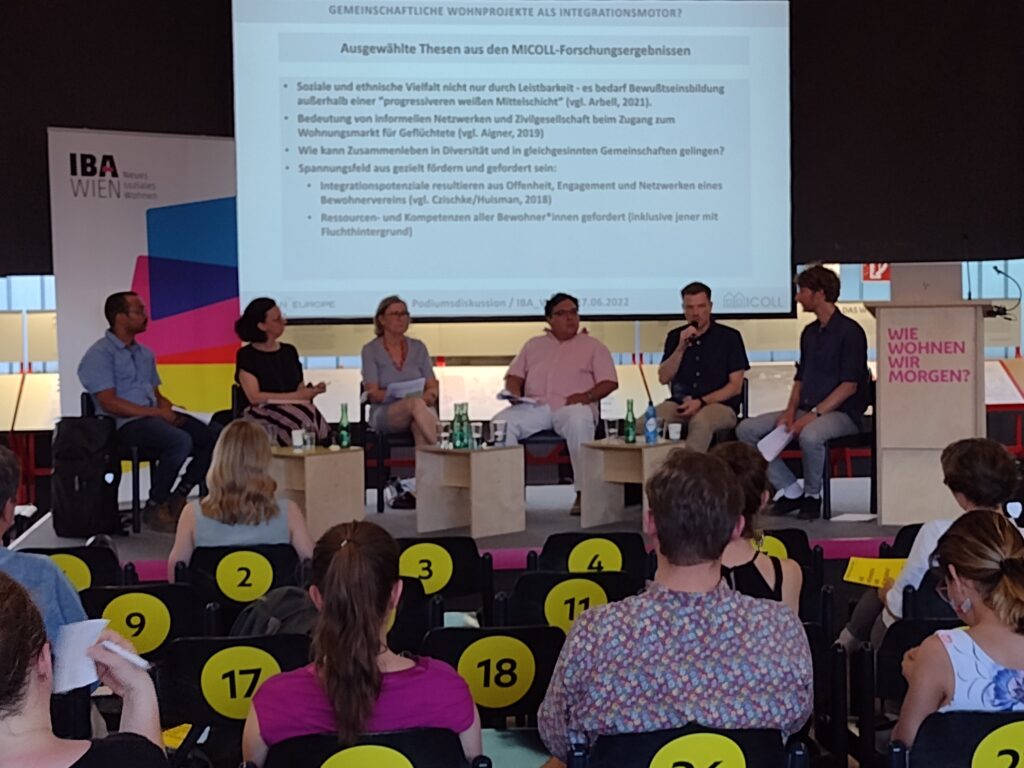
2022-04-25 | Presentation: Socially sustainable housing (seminar in Swedish)
Sustainable housing supply? Presentation of Government Inquiry by Karolina Skog.
2022-04-02 | Study visit to Sonnwendviertel, Vienna, Austria
A group of Swedish housing scholars and practitioners visited Vienna to study bottom-up housing innovation. This enabled an interesting exchange between Austrian and Swedish MICOLL partners regarding the implementation of social sustainability criteria in subsidised housing construction in both countries. In addition, MICOLL partners Tinna Harling (Egnahemsfabriken Centre for Collaborative Housing) and Richard Lang (Bertha von Suttner Private University & Aschauer Corporate Governance Forschungs GmbH) joined a guided walking tour through the Sonnwendviertel. It is a large urban development area at Vienna Central Station where about 5000 new apartments have been built since 2009, including more than 2000 subsidised housing units. The tour took us to different collaborative housing projects in the area, such as “Gleis 21” and ”Bikes and Railes” (both have been hosting refugees) as well as to “Grätzelmixer” and to “Grüner Markt” where the project founder showed us around various common rooms in the house and gave us an insght into the history of the project and the challenges involved in co-designing and co-financing this bottom-up housing project. Under this link you will find an excellent overview of our walking tour in the Sonnwendviertel in Vienna and about different housing projects that we visited.
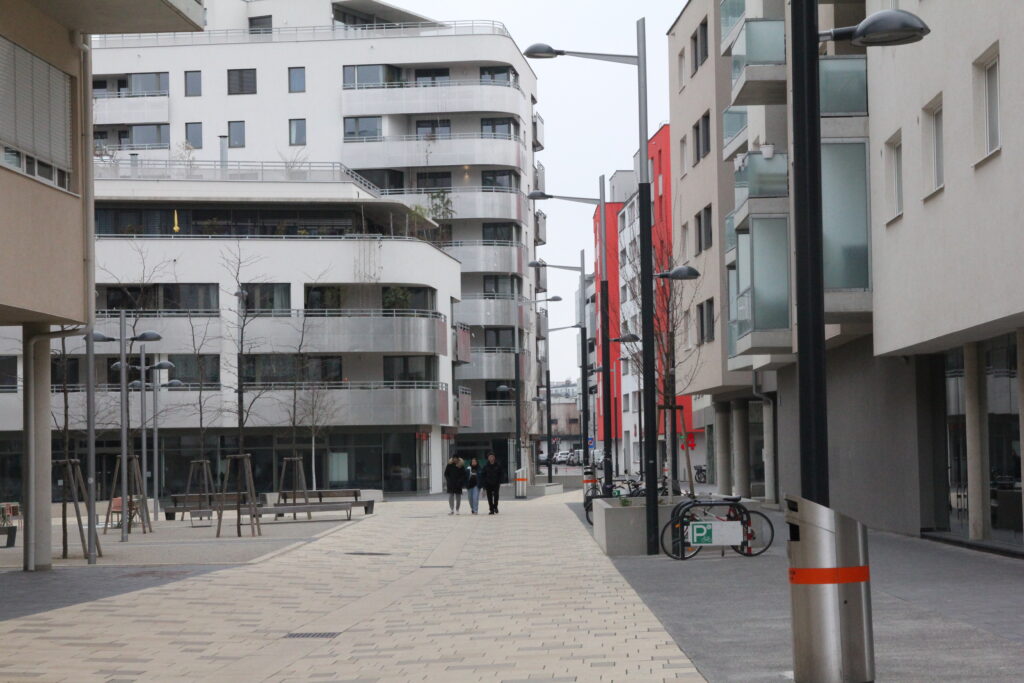
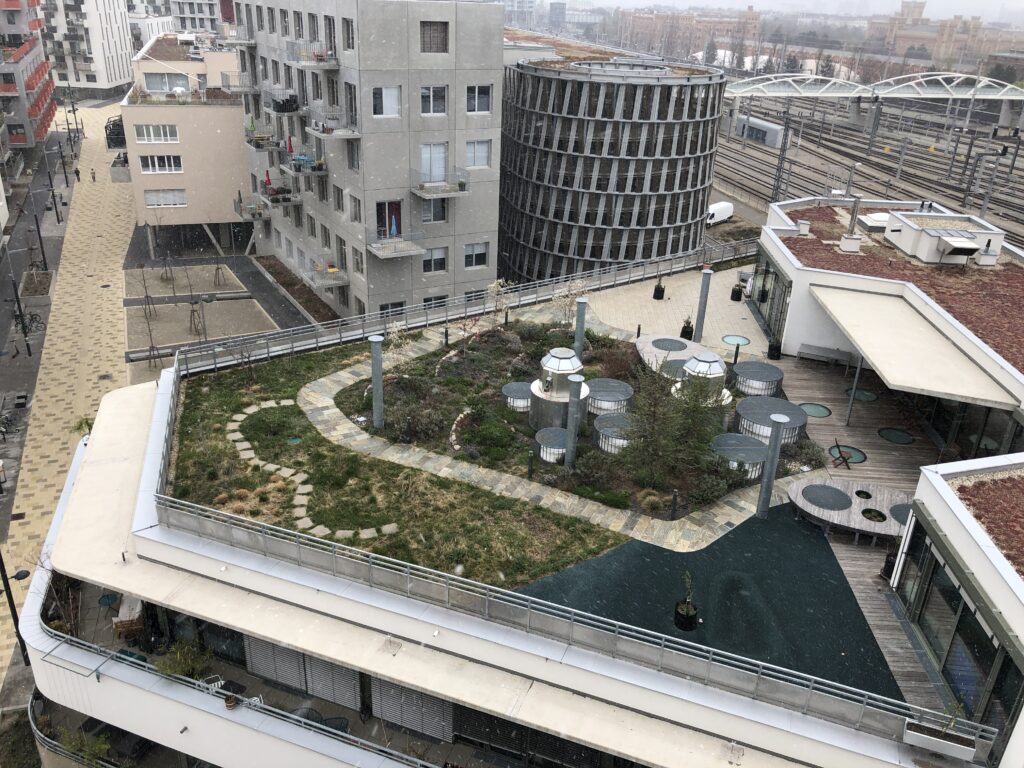
2022-02-26 | MICOLL International Workshop
Core project partners and stakeholders (32 total) from the three national MICOLL networks joined the project’s first international workshop. The event included brief preliminary findings from our academic literature review on how migrants and refugees fare within the wider topic of collaborative housing (to be submitted to an academic journal during 2022). National presentations on project activities so far followed. Local partners in the three countries also contributed with more contextual information about case study areas and testbeds. Presenters were: Zohra Chiheb from London Borough of Camden (UK); Naïna Dion-Barbin, Pia Palo and Phileas Schulhof, masters students from Chalmers University of Technology, as well as Kenneth Berglund from the Swedish Union of Tenants (Sweden); and Manuel Hanke from wohnbund:consult eG (Austria). These thought-provoking presentations provided insights not only about contextual differences, but also how practices differ between various stakeholders based on these variations. Each presentation was followed by discussions amongst participants. The final activity was a presentation of some preliminary findings from the national research activities, focusing on differences and similarities between the three countries, followed by a joint discussion on how to move the transnational stakeholder exchange forward.
2022-01-11 | Social Inclusion – architect students presenting their work in Bergsjön, Sweden
Three students, Naïna Dion-Barbin, Phileas Schulhoff and Pia Palo, have for three months collaborated with MICOLL and carried out studies in Bergsjön. They started from the wish to explore new ways of housing and living through a test-bed activity in Bergsjön, but after carrying out workshops with inhabitants they landed in that the formation of ‘commons’ (common areas for diversified use) would fill urgent needs that the often overcrowded families suffer from, and perhaps in the long run be able to contribute to engagement in collaborative housing, by people coming together and talking about it. They write: “Our project has taken a turn towards exploring how the public space in Bergsjön, and specifically the proposed plot of land by the Rymdgrillen, could become an extension of every resident’s home, by offering common spaces that could alleviate some of the pressure off of the overcrowded apartments. Possible uses include places to study, to hang out, to gather the greater family or friends for a birthday party, and so on.” Based on their experience, they have designed a toolbox (a real box filled with various dialogue tools) that can be used for dialogue and consultation in neighbourhoods. [link to their work]
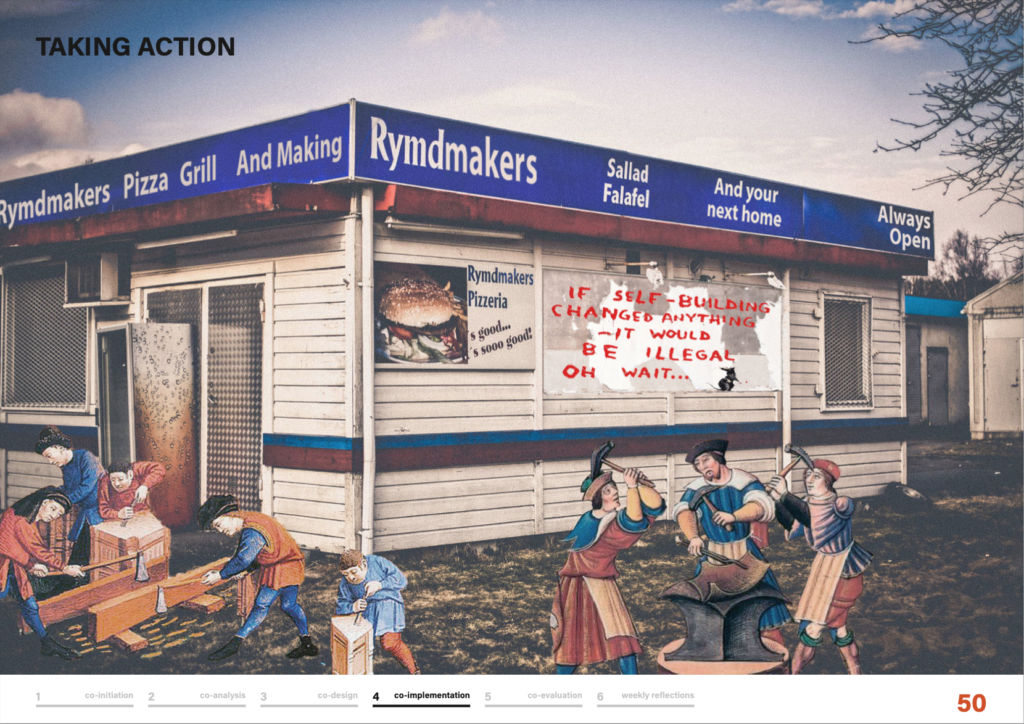
2021-11-30 | MICOLL’s first Newsletter has been published
The newsletter has been widely distributed to the membership of the European Network for Housing Research ENHR. [download newsletter]
2021-11-25 | Study visit to Svartlamon, Trondheim, Norway
We visited one of Egnahemsfabriken’s biggest role models when it comes to co-design and self-building: Svartlamon in Trondheim. Svartlamon is Norway’s first Urban Ecological Experimental Area, which was created thanks to an occupation against demolition. The area has about 250 inhabitants and is run by Svartlamon Boligstiftelse which is managed by the municipality and the residents in collaboration. The land is rented by the municipality. The area contains old beautiful wooden houses that are carefully renovated as well as some new buildings with homes and a lot of businesses. We visited Experimentboligerna, which is a terraced house with five homes that was completed in 2017, and Selbukassa, a relocated log house that was completed in 2021. Both these self-construction projects were incredibly exciting to finally see in reality and to hear those who live in them talk about the processes. The experimental homes were built for as little as NKR 3 million, ie NOK 600,000 per home, which is 20% of what new production costs in the country otherwise. Selbukassa was built for NKR 2.9 million, i.e. NKR 725,000 per item. Extremely low costs and very beautiful and fun architecture! [download report in English] [ladda ner rapport på svenska]
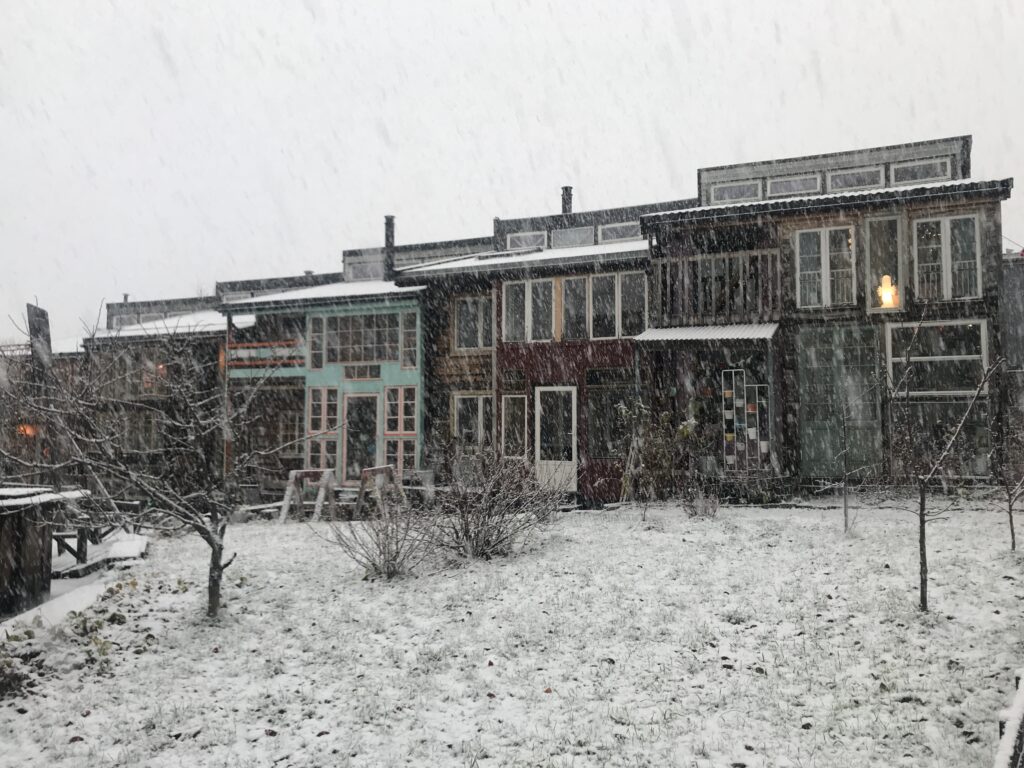
2021-11-19 | The Swedish conference on socially oriented construction
MICOLL presented the project at the Swedish Conference on Socially Oriented Construction, in the session on ‘Integrating and Inclusive Living Environments’. This conference is a main event in Sweden for those engaged in collaborative housing, with ample opportunities to interact and exchange insights. [länk till samtal efter presentationen]
2021-11-11 | Presentation to the UK Confederation of Cooperative Housing (CCH)
Melissa Fernández presented MICOLL to nation-wide members of the Confederation’s Local Authority Community-Led Housing Group. After the presentation, a discussion ensued about how refugee-firendly CH could be (or have already been) addressed from a Local Authority housing strategy and delivery perspective.
2021-10-08 | Test-bed Sweden | University students involved
Three students in the masters course Design and planning for social inclusion (Chalmers ACE) have chosen MICOLL as their ‘client’ for practical work during September–December. Their task is to – in dialogue with residents – come up with ideas on what a test-bed for collaborative building could look like. The chosen place to focus on is the empty former petrol station site next to the fast food kiosk close to Rymdtorget, but this can change as the work progresses. The end product in December can consist of a design proposal for a process, i.e. how the work to create a test-bed can be organized, but can also result in a design proposal for a place.
2021-09-30 | UK Stakeholder workshop
A first UK forum of exchange was held to learn from groups, individuals or practitioners interested in the extent to which CH models and practices address housing (or other) issues for marginalised migrant populations, in particular recent and long-term refugees. After presentations from CH scholars and residents, the 30+ group began to chart – from the ground up – the range of current experiences, as well as possible issues, challenges. or ideas for change that are involved in developing CH that is also migrant-refugee focused or friendly. See more details here.
2021-09-14 | Urban Migration – Call Kickoff at JPI Urban Europe
MICOLL took part in the official launch of the JPI Urban Europe Urban Migration programme. Due to the enduring pandemic, the kickoff had to be zoom-based. After an introduction by JPI Urban Europe, the eight projects funded by the call presented themselves through brief project pitches. Two thematic breakout sessiones on ‘Urban governance of housing issues’ and ‘Socio-spatial integration and involvement of citizens and city administrations’ brought project participants together for cross-fertilization.
2021-09-08 | Austrian stakeholder workshop
The Austrian stakeholder workshop was a 3-hours online event via Zoom and using the Miro board software to facilitate interaction. The workshop brought together 16 stakeholders who represented a range of sectors and institutions that are active in the fields of social and collaborative housing. Focusing on the local context of Vienna, participants discussed and commented on key results from the MICOLL literature review, i.e. key barriers and opportunities for the development and mainstreaming of collaborative housing with migrants and refugees. Workshop participants agreed that it will be essential to establish a positive narrative of collaborative housing with refugees in the public discourse. Another crucial aspect would be the transition of residents with refugee background from the collaborative housing niche to mainstream social housing sectors. Participants also questioned the common view of residents with refugee background as ‘them’ versus ‘us’, the ‘native’ residents, given that both represent heterogeneous groups.
2021-09-02 | National workshop in Sweden
MICOLL organized a national multi-level workshop in Sweden, with participation of stakeholders form national, municipal and neighbourhood levels, represented by public, commercial and civil society organizations and agencies. The focus of the workshop was to pinpoint possibilities and barriers linked to migrant collaborative housing in Sweden, to rank these, and to propose paths to transition towards migrant collaborative housing in the near future. The figure illustrates some findings of main barriers based on a first quick analysis of the workshop discussions, where both the target group ‘migrants’ and an emphasis of housing collaboration with migrants seem to exacerbate already existing systemic barriers for collaborative housing in Sweden.

2021-05-24 | Study visit in Bergsjön and Angered, Sweden
Today we made a study visit to Bergsjön and Angered which aimed to gather actors who are interested in developing a concrete place to support the development of self-building and co-housing. The visits gave the actors chance to talk to each other about this and develop knowledge together – knowledge which will be used in the research project. We visited some inspiring places where they do local development work with possible connections to self-building and co-housing. We also visited potential places in Bergsjön to suggest as test bed. The study visits and presentations were documented by a filmmaker. The film (see below) was shown to our international partners at a zoom conference in the autumn of 2021, where we will also get to see their work.
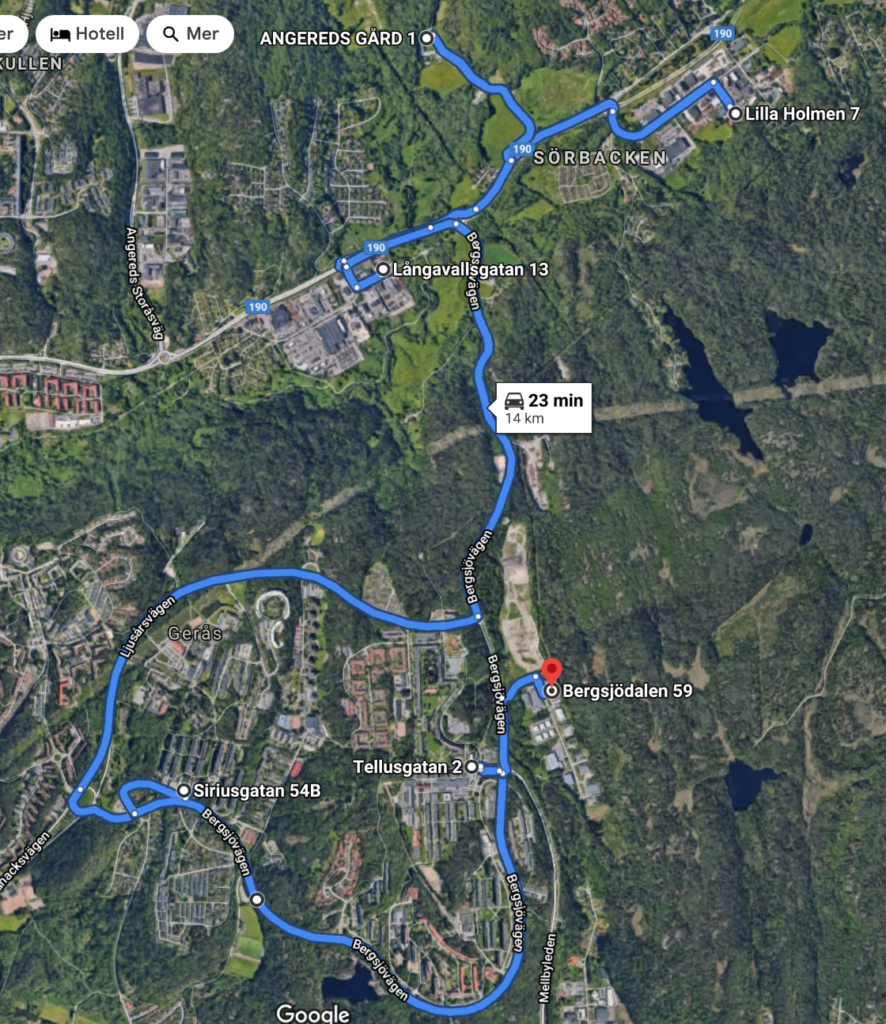
2021-04 | Austrian test-bed “OASE.inklusiv” in Vienna
Our test-bed “OASE.inklusiv” in Vienna has been finalised. It is a collaborative housing project that promotes inclusiveness of residents regardless of their origin and social background. “OASE.inklusiv” has 84 rental units of various size and a range of communal facilities open to different usages. It also provides affordable rental units to 15 refugee families who engaged in the participatory planning process which was facilitated by the consulting and planning office “wohnbund:consult” and the NGO “neunerimmo” that is experienced in working with homeless people, including refugees. Both organisations are also partners in MICOLL.
“OASE.inklusiv” is the result of a partnership between a resident association and the non-profit housing developer “Neues Leben”. In contrast to the classic bottom-up model of Baugruppen, “OASE.inklusiv” ensures more heterogeneity among residents through a given architectural and legal framework. This project set-up enables a low-threshold form of self-organization and participation in the design of communal and individual areas which is beneficial for vulnerable resident groups who have limited time and financial resources.
Photos: wohnbund:consult
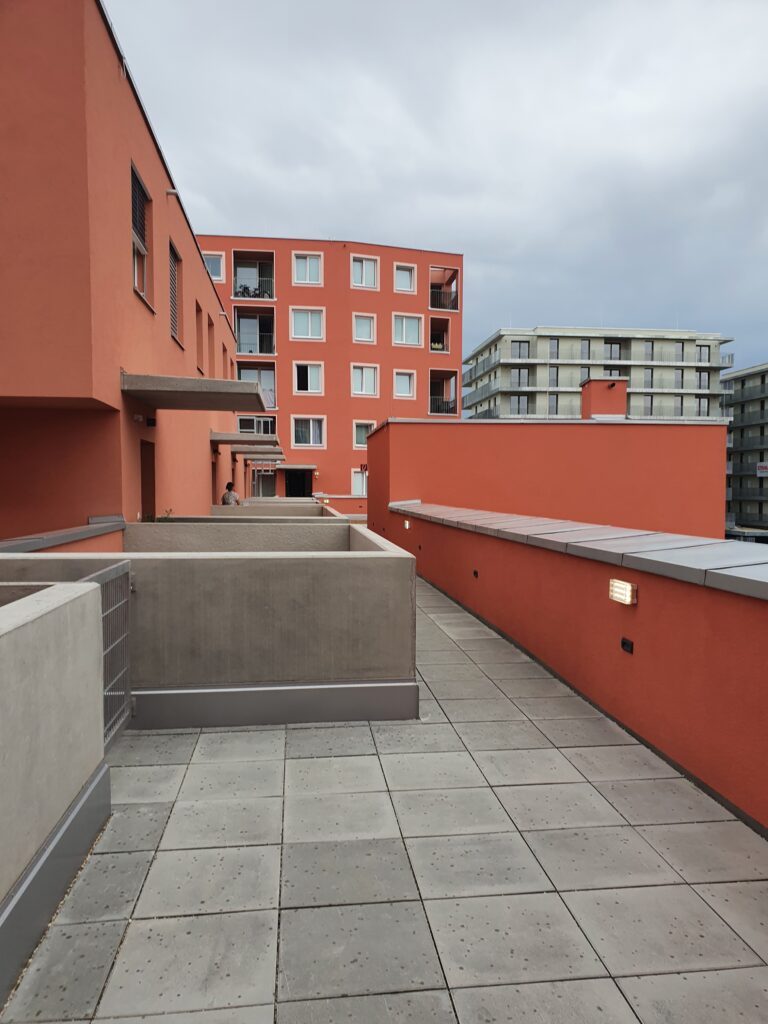
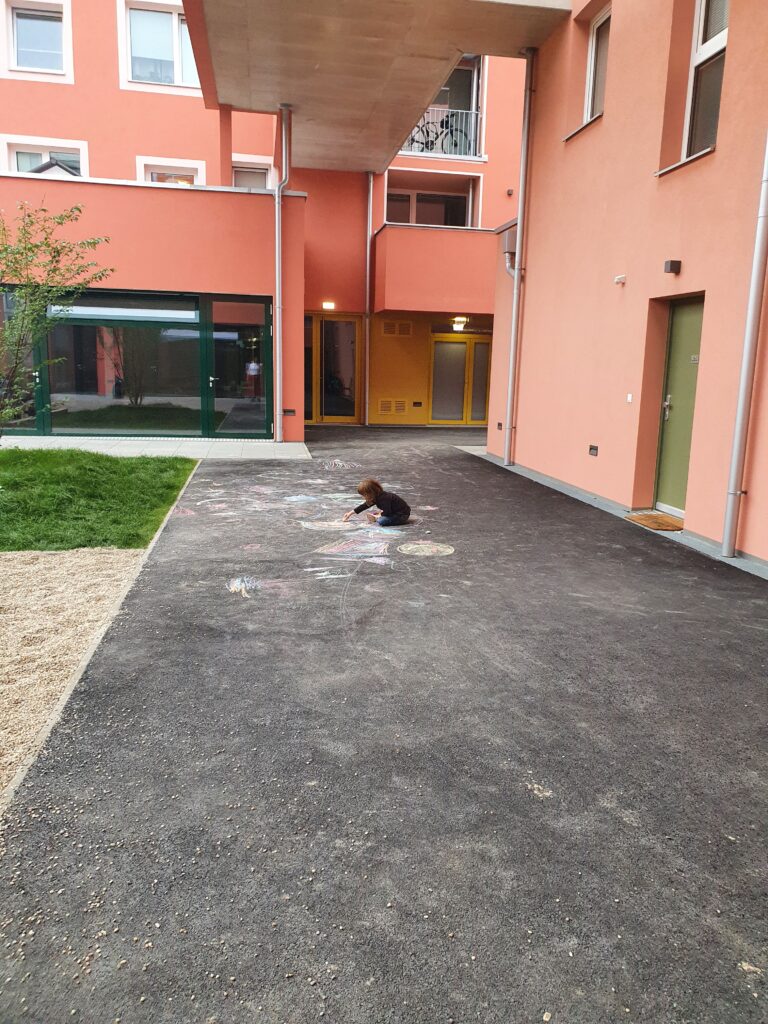
2021-02-26 | The Swedish test-bed is planned to be in the neighbourhood of Bergsjön in Gothenburg.
Today a local zoom-kick-off took place with actors to be informed about the project and be given the opportunity to ask questions and discuss participation. Bergsjön, which previously consisted of crofts and farms, was built in its current form 1965-68 as part of the so called Million Programme in Sweden when one million homes were built in ten years throughout the country to solve the great housing shortage and substandard housing conditions in city centers. The area with around 17,000 residents is sparsely built with a lot of nature and car-free parts in the middle. This is much appreciated by the residents, but at the same time the distance between sub-areas is considered a problem. Densification – in the right way – is therefore seen as a potential quality improvement by residents. Pictures: Kartor.
